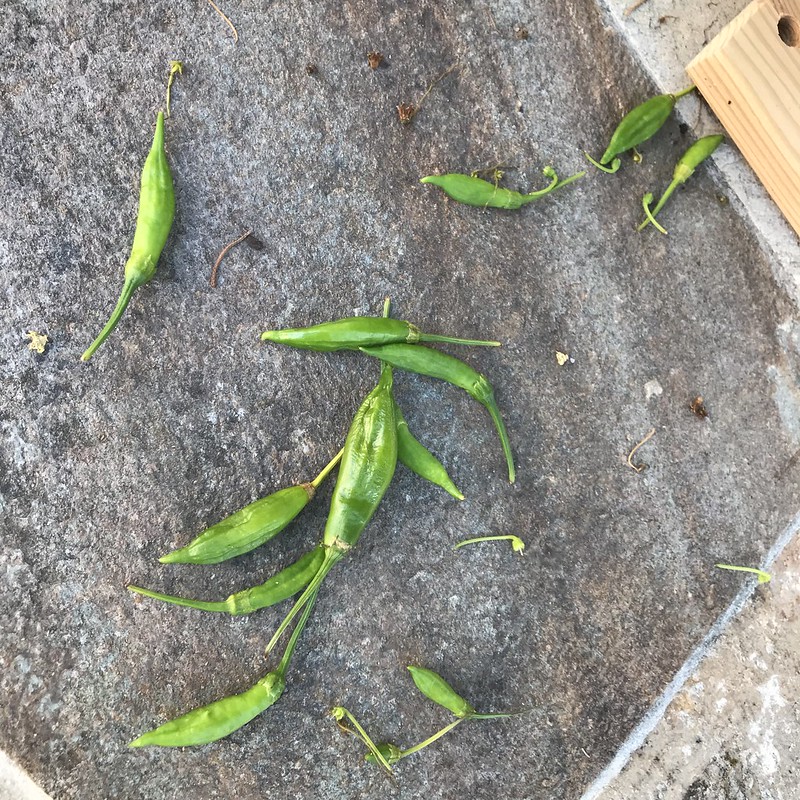This baccatum plant is putting out a lot buds and flowers but only one fruit has actually managed to set and put on some decent growth so far (Though it's not nearly as fast as that of even the dumpiest looking of my shishito peppers).
All of the others end up dropping off the plant shortly after the petals on the flowers have dried up and fallen off. I've been making sure to gently brush/shake each flower to help ensure pollination, but it doesn't seem to be making any difference.


I've noticed that some of the new leaves on the highest part of the plant have been coming out curled, wrinkled, and/or with patches of brown on them, which from what I've read seems to suggest a potential calcium deficiency as I've been religiously monitoring the plant to ensure no pest infestations occur and doing some preventative neem oil spray every week in the early morning/evening partly due to broad mite paranoia.
I've been watering them about once a week after the soil dries out almost entirely and they're under a 50% shade cloth as the temps in full sun have been exceeding 90 degrees. Even the nights are remaining pretty toasty in the high 70 to low 80s range. As far as fertilizer goes, I've been giving it a 10-15-10 synthetic liquid fertilizer diluted to half strength every other watering, as well as a kelp/epsom salt foliar spray every few weeks.
Overall, the plant looks pretty decent, but I'm puzzled as to why it's not able to yield any fruit.
All of the others end up dropping off the plant shortly after the petals on the flowers have dried up and fallen off. I've been making sure to gently brush/shake each flower to help ensure pollination, but it doesn't seem to be making any difference.
I've noticed that some of the new leaves on the highest part of the plant have been coming out curled, wrinkled, and/or with patches of brown on them, which from what I've read seems to suggest a potential calcium deficiency as I've been religiously monitoring the plant to ensure no pest infestations occur and doing some preventative neem oil spray every week in the early morning/evening partly due to broad mite paranoia.
I've been watering them about once a week after the soil dries out almost entirely and they're under a 50% shade cloth as the temps in full sun have been exceeding 90 degrees. Even the nights are remaining pretty toasty in the high 70 to low 80s range. As far as fertilizer goes, I've been giving it a 10-15-10 synthetic liquid fertilizer diluted to half strength every other watering, as well as a kelp/epsom salt foliar spray every few weeks.
Overall, the plant looks pretty decent, but I'm puzzled as to why it's not able to yield any fruit.

